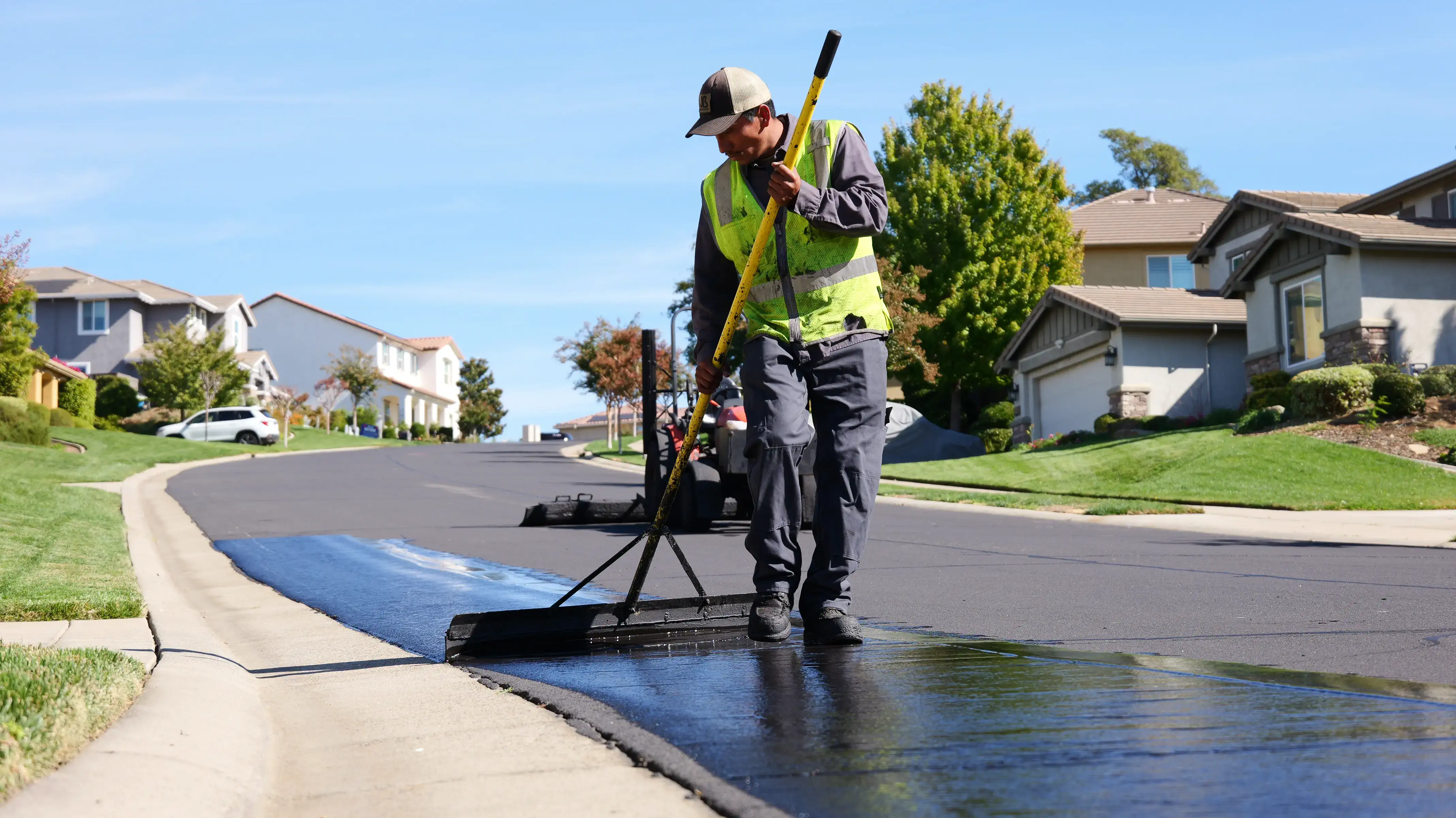Seal Coat and slurry coats are both surface treatments used to protect and extend the life of pavement surfaces, but they differ in materials, application methods, and ideal use cases. Below is a comparison of each.
Seal Coat
Composition: Seal coats are usually made form asphalt emulsions combined with fine aggregates, sand and additives.
Application: They’re sprayed or brushed on the pavement surface in a thin layer, typically in parking lots, driveways, and low-traffic roads.
Purpose: Seal coats provide a protective layer that shields the pavement from UV rays, water, chemical spills, which helps to prevent oxidation and surface cracking.
Curing Time: Seal coats cure relatively quickly, often allowing traffic within a few hours to a day.
Ideal Use: Seal coats are most suitable for preventative maintenance on surfaces that are in fair to good condition, as they do not add significant structural support or fill large cracks.
Slurry Coat (Slurry Seal)
Composition: Slurry coats are thicker than seal coats and consist of asphalt emulsion, water, fine crushed aggregate, and other additives.
Application: Slurry seals are spread over the pavement with a specialized spreader, applying a thicker, more textured layer that can fill minor cracks and surface irregularities.
Purpose: Slurry seals improve skid resistance, restore a more uniform surface, and provide a weather-resistant barrier, making them effective for surfaces that need both protection and minor surface repair.
Curing Time: Slurry coats require more time to cure - usually from several hours up to a full day - before opening to traffic.
Ideal Use: Slurry coats are better for roads and high-traffic areas that have some minor cracking or surface ware and require a more robust treatment than a seal coat.
